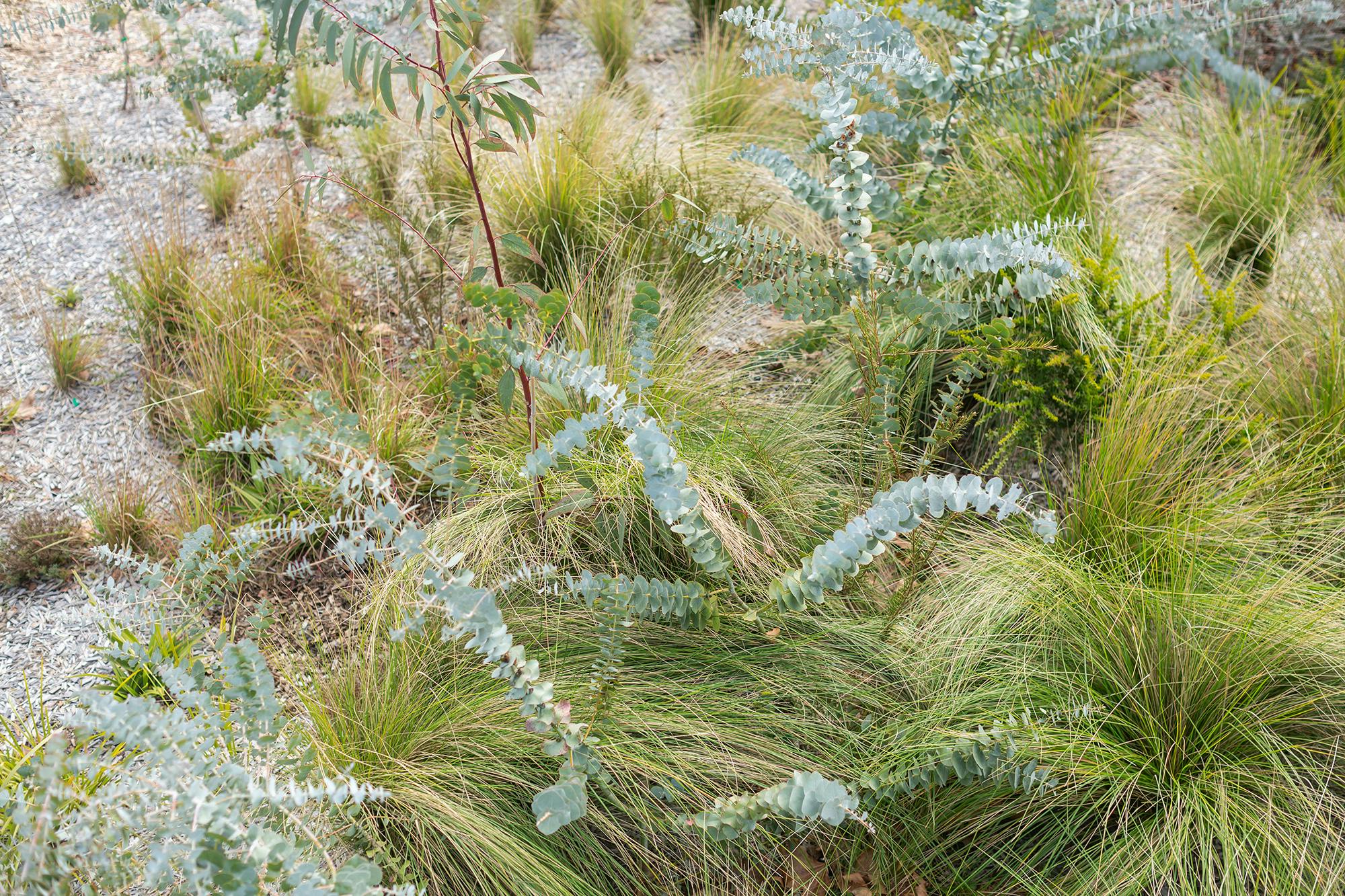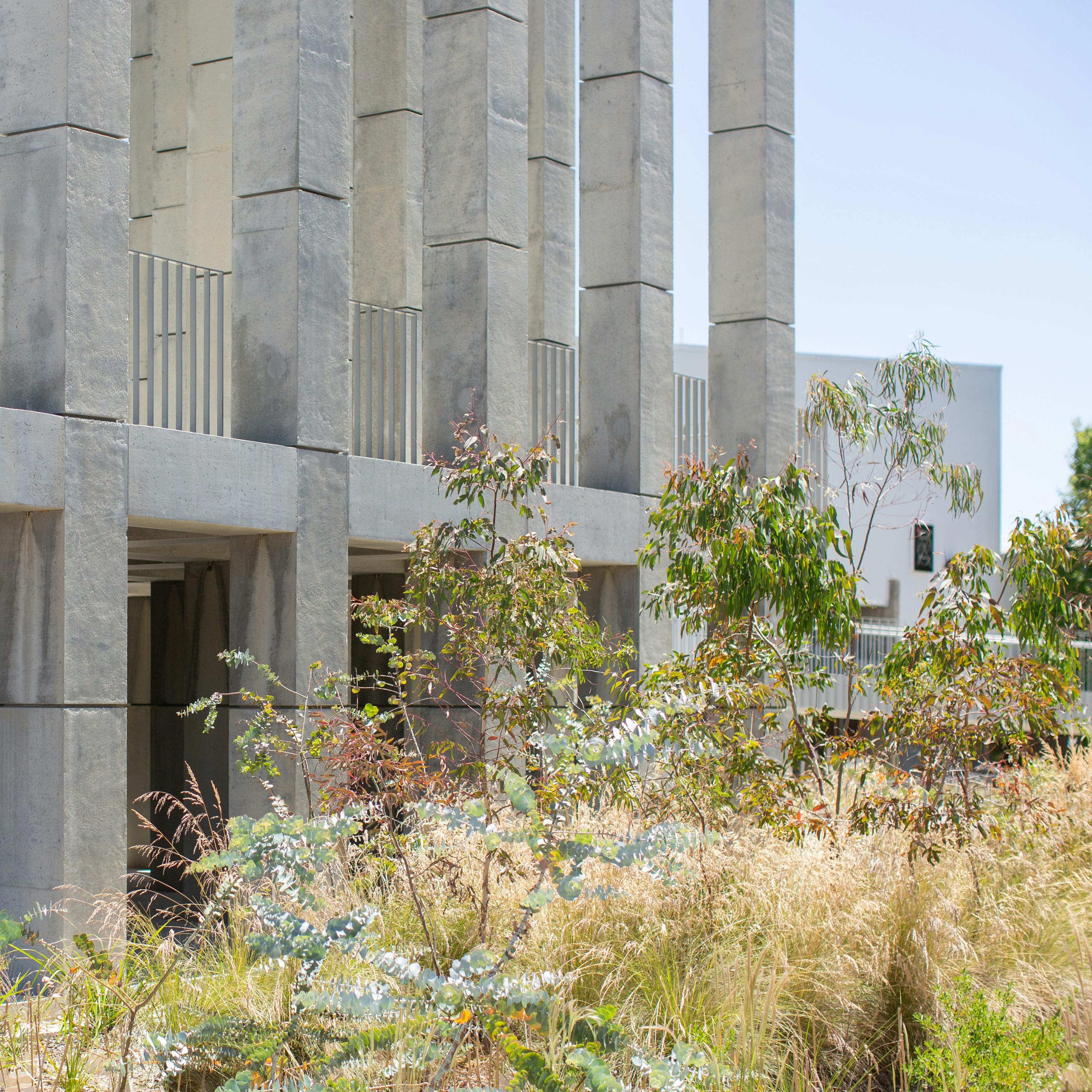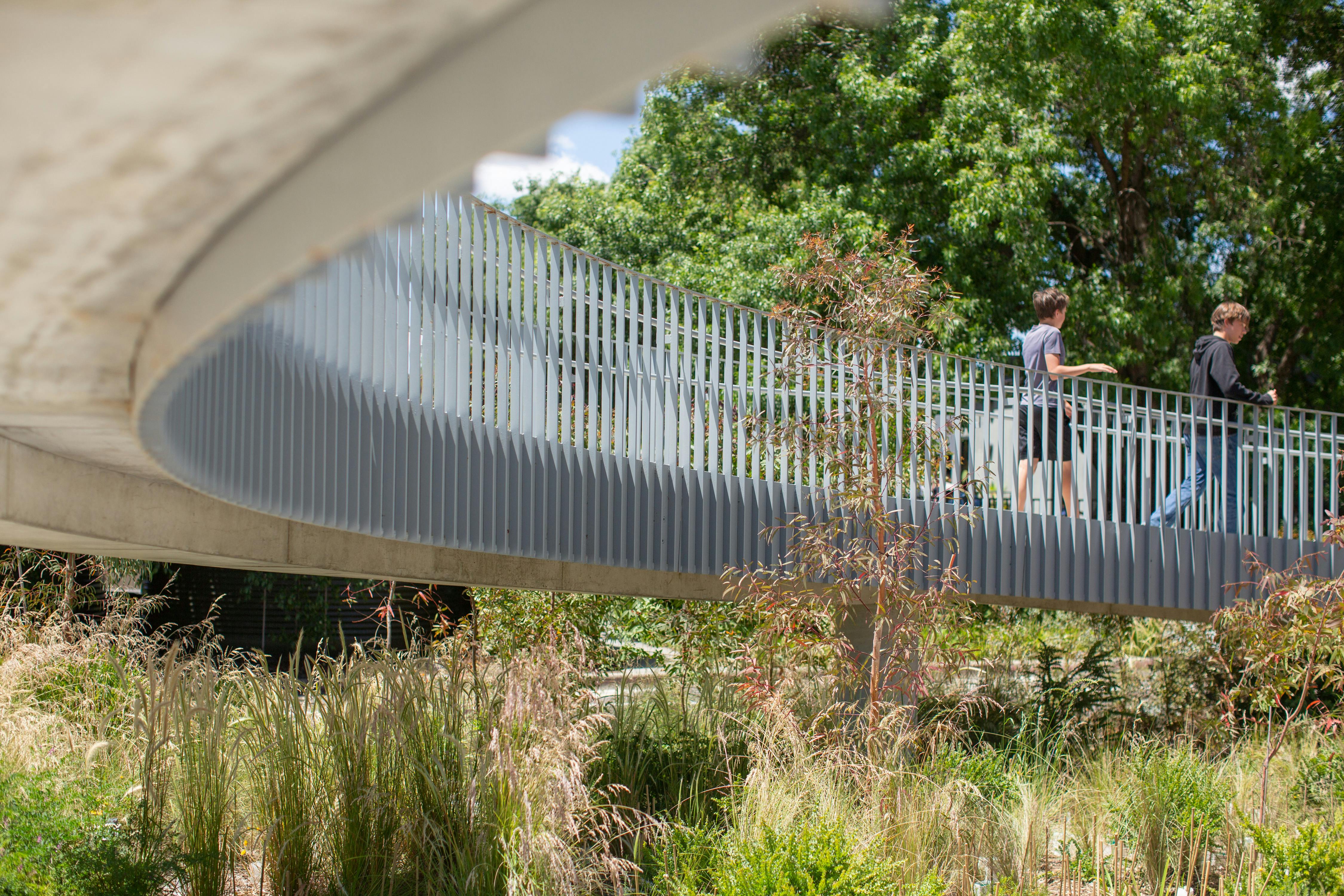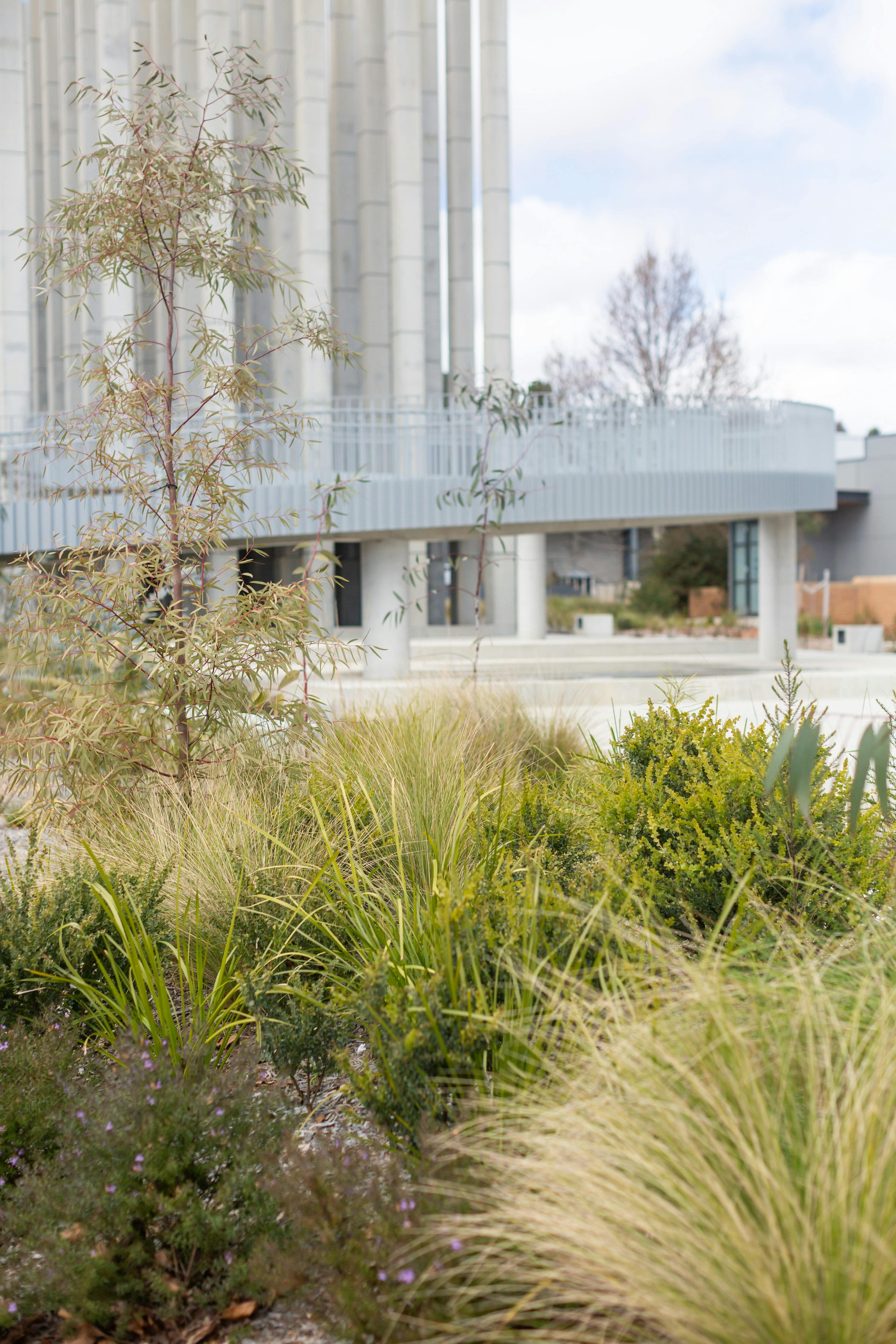
Images: Chloe Ferres
Growing more at LESS
Landscape is a living process, complex and evolving. As designers, we seek to influence but not control, enabling landscapes to shape us more than we shape them.
Within Canberra’s Dairy Road Precinct – a changing neighbourhood adjacent to Jerrabomberra Wetlands – sits the LESS Pavilion, designed by Chilean art and architecture studio Pezo von Ellrichshausen for Molonglo Group, with landscape architecture by OCULUS.

Part artwork, part public space, as "an intentionally ambiguous structure," explains Pezo von Ellrichshausen, "LESS invites the evolving community to interact with and occupy its varied spaces as they see fit."
The pavilion is encircled by 6,000 individual plants of over 40 different species, many of which are endemic to Canberra, designed to introduce a degree of wildness to a structure defined by formal geometries.

Ngunnawal Country plant life is distinct for its muted tones of greens, greys and whites, floriferous winter and spring displays, with an ability to cope with harsh temperature variations and long periods of low rainfall.
Eucalyptus mannifera (Brittle Gum), and its cultivar Little Spotty, give emergent canopy cover. While a floriferous mid-storey of Callistemon, Grevillea, Melaleuca and Acacia arranged in a lyrical composition, flower profusely at different times of the year, bringing a sense of enclosure to the landscape.
Our planting design for LESS engages with the particularities of space and ambience. Drifts of groundcovers and low-growing shrubs are interspersed with matrixes of grasses, sedges, and local wildflowers. Chaotic in appearance, the naturalistic planting will become more immersive and dominant with time. The growing plants will support the site’s evolution from its recent industrial history to a recessive landscape that might more closely resemble its pre-colonial ancestor.
This is Ngunnawal Country, within an area known as Biyaliegee.
